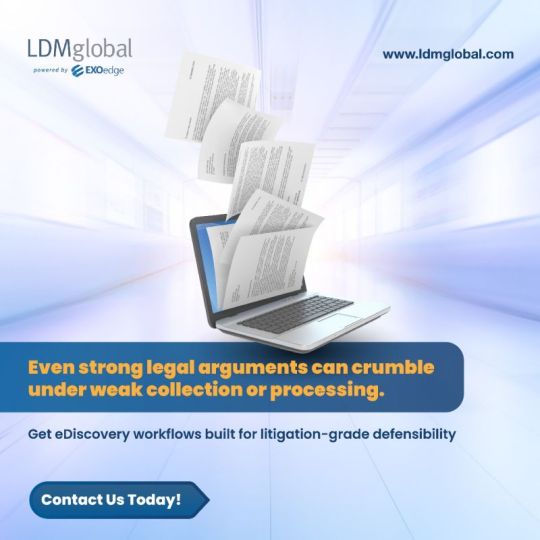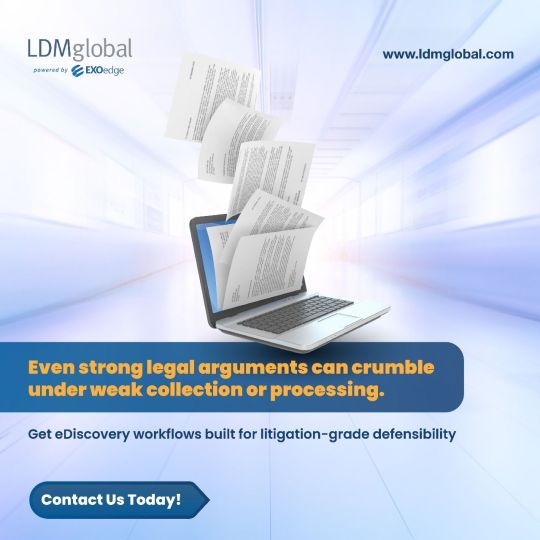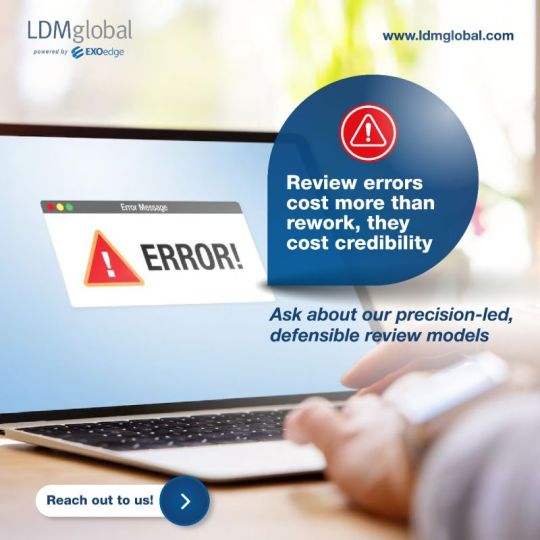Don't wanna be here? Send us removal request.
Text
DSARs and Data Minimization: Why It Matters
In today’s data-driven world, organizations collect vast amounts of personal data — sometimes more than they need. With privacy regulations like the GDPR and CCPA enforcing stronger individual rights, Data Subject Access Requests (DSARs) have become a critical compliance issue. However, these requests are also highlighting a related and equally important principle: data minimization.
So, how do Data Subject Access Requests (DSARs) intersect with data minimization, and why should organizations pay attention? Let’s explore.
Understanding DSARs and Their Scope
Data Subject Access Requests (DSARs) give individuals the right to request access to the personal data an organization holds about them. These requests require organizations to respond within a set time frame, often 30 to 45 days, with details such as:
What data is collected
Why it was collected
How it is used, stored, and shared
Who it has been disclosed to
This means organizations must be ready to search, compile, and deliver comprehensive reports — quickly and accurately.
The Data Minimization Principle
Data minimization is a key tenet of modern privacy law. It states that organizations should only collect and retain the minimum amount of personal data necessary for a specific purpose. Holding excessive data not only violates privacy principles but also increases the risks and costs associated with Data Subject Access Requests (DSARs).
When data is minimized:
Fewer records need to be searched during a DSAR
The chances of accidental disclosure of unrelated or sensitive information drop
Organizations reduce the overhead in data storage and management
In short, data minimization simplifies DSAR compliance and reduces regulatory exposure.
Why Data Minimization Makes DSARs Easier
Each time a company receives Data Subject Access Requests (DSARs), it must locate, verify, and extract personal data across its systems. For organizations with excessive or poorly organized data, this can be a nightmare.
Here’s how data minimization helps:
Reduced Search Scope: Less data means faster retrieval times and lower processing effort.
Improved Accuracy: Data is easier to classify and redact when it's limited to relevant information.
Lower Legal Risk: Over-collection often leads to sharing or exposure of unnecessary data, increasing the chances of non-compliance or breaches during DSAR fulfillment.
By applying data minimization from the start, businesses can streamline how they respond to Data Subject Access Requests (DSARs) and avoid scrambling when one arrives.
Best Practices for Aligning DSARs and Data Minimization
To reap the full benefits, organizations should implement the following:
Conduct Regular Data Audits Identify what data you collect, why, and for how long. Remove redundant or obsolete information.
Limit Data Collection at the Source Only ask for essential data during sign-ups or customer interactions.
Implement Strong Data Governance Policies Ensure teams understand and follow data minimization protocols across departments.
Train Employees on DSAR Processes Empower your staff to respond to Data Subject Access Requests (DSARs) with accuracy and confidence.
Use Automated DSAR Management Tools Leverage software that supports both DSAR fulfillment and data minimization workflows.
Conclusion
The rise in Data Subject Access Requests (DSARs) is pushing organizations to rethink how they collect and manage personal data. Data minimization isn’t just a best practice — it’s a strategic imperative. By collecting less and managing better, businesses not only comply more easily with DSARs but also build trust with their customers and stakeholders.
0 notes
Text

Outsource eDiscovery Services by LDM Global
LDM Global presents the value of choosing to outsource eDiscovery services, emphasizing cost-efficiency, expert support, and advanced legal technology. Their tailored solutions help law firms streamline digital investigations, ensure compliance, and reduce internal workload—making LDM Global a trusted partner for secure, scalable, and results-driven eDiscovery support.
0 notes
Text
Legal Pitfalls to Avoid After a Data Breach Review
A data breach can be a nightmare for any organization. Once the dust settles and the immediate threats are contained, a data breach review becomes the next critical step. However, many businesses unknowingly fall into legal traps after this review stage, compounding the damage rather than resolving it. Understanding and avoiding these legal pitfalls is essential to minimize liability, protect your reputation, and ensure regulatory compliance.
1. Delaying Notification to Affected Parties
One of the most common mistakes after a data breach review is failing to notify affected individuals promptly. Regulatory frameworks such as GDPR, HIPAA, and state-specific breach notification laws have strict deadlines. Delayed or vague notifications can lead to hefty fines and lawsuits. Organizations must establish a clear communication timeline that aligns with their data breach response policy.
2. Incomplete or Inaccurate Disclosure
A data breach review aims to uncover what data was compromised, how it was accessed, and who was affected. Some companies, however, release partial or misleading information—either to downplay the incident or due to lack of full visibility. This approach can backfire legally. Regulators expect full transparency, and failing to disclose critical facts could result in legal action or penalties for non-compliance.
3. Failing to Preserve Digital Evidence
Another major legal pitfall after a data breach review is not preserving digital evidence. If your organization ends up in court or under regulatory scrutiny, logs, emails, and forensic reports may become vital. Accidentally overwriting or deleting these can weaken your defense and suggest negligence. Always preserve all materials gathered during your data breach review in a secure, tamper-proof environment.
4. Ignoring Third-Party Liability
Your data breach review might reveal that the incident originated from a third-party vendor or contractor. Many organizations make the mistake of assuming that this shifts liability away from them. However, regulators often hold the primary data controller accountable, regardless of the breach's origin. Be sure to review vendor contracts and include security obligations, breach notification terms, and indemnity clauses.
5. Overlooking Internal Accountability
Often, legal exposure increases when the data breach review shows signs of internal mismanagement—such as ignored warnings, poor password policies, or lack of encryption. Simply blaming external attackers won’t hold up in court. It's vital to show that your organization had reasonable security measures in place and that they were consistently enforced.
6. Not Consulting Legal Counsel Early
Legal advice is not optional during a data breach review—it’s essential. Some companies wait too long to bring in legal professionals, risking missteps in communication, evidence handling, and reporting. Engaging a lawyer early can help shape your response strategy and ensure compliance with laws in all applicable jurisdictions.
7. Mishandling Public Communication
After a data breach review, how you communicate with the public can have serious legal implications. Statements made on websites or social media can be used in court or regulatory investigations. Avoid making promises you can’t verify or downplaying the impact of the breach. All public messaging should be vetted by legal experts.
8. Ignoring Post-Breach Remediation
Finally, a data breach review is only the beginning. Ignoring recommended security upgrades, failing to retrain staff, or leaving vulnerabilities unpatched can lead to repeat incidents—and even greater legal trouble. Courts and regulators often examine what actions were taken after the breach to assess negligence or good faith.

Conclusion
A data breach review is a powerful tool—but only if handled properly. Avoiding these legal pitfalls requires careful coordination between IT, compliance, legal teams, and executive leadership. By approaching the process with transparency, diligence, and legal foresight, organizations can reduce the risk of lawsuits and regulatory fines, and begin the path toward restoring trust.
0 notes
Text

Cybersecurity Breaches by LDM Global LDM Global highlights critical cybersecurity breaches affecting global organizations, emphasizing the rising threats of data theft, ransomware, and insider attacks. Their presentation underscores the need for proactive security measures, employee training, and incident response planning to mitigate risks and protect sensitive legal and corporate data.
0 notes
Text
Managing Reputation After a Data Breach
In today's digital world, data security breaches are not just IT problems—they are public relations nightmares. When customer data is compromised, trust takes a hit. Whether you're a small business or a global corporation, your brand’s reputation can suffer long-term damage. However, how you handle the aftermath of a breach can make a significant difference in restoring stakeholder confidence and safeguarding your business future.
Understanding the Impact
Data security breaches impact more than just internal systems. Once a breach becomes public, customers, investors, and even regulators scrutinize how your company responds. The longer it takes to act or communicate transparently, the more damage you risk to your reputation.
According to studies, 65% of consumers lose trust in a company after their personal data is exposed. In some cases, businesses never fully recover. This makes it essential to approach post-breach reputation management as a strategic priority.
Respond Swiftly and Transparently
The first step in managing your reputation after data security breaches is immediate, honest communication. Once a breach is confirmed, issue a public statement. Acknowledge the incident, explain what happened in clear terms (without technical jargon), and outline the steps being taken to mitigate the damage.
Avoid vague responses or attempts to downplay the situation. Transparency builds credibility—even in a crisis. Customers are more likely to stay loyal if they believe your company is taking responsibility and fixing the problem.
Notify Affected Parties Quickly
One of the most damaging aspects of data security breaches is delayed notification. Inform affected users as soon as possible. Include specific information about what data was compromised and what steps users can take to protect themselves, such as changing passwords or monitoring credit reports.
Providing free credit monitoring or identity protection services can also show that your company values customer security, helping to preserve trust.
Demonstrate Strong Leadership
Leadership visibility is crucial. When executives speak directly to the public and stakeholders, it reinforces accountability. Public apologies, interviews, or letters from the CEO can humanize your brand and show commitment to rebuilding trust.
Avoid letting only your IT department speak on behalf of the company. Reputation recovery requires visible leadership and proactive outreach across multiple platforms.

Take Action to Prevent Future Breaches
While reputation damage from data security breaches is immediate, long-term recovery depends on what you do next. Invest in stronger cybersecurity infrastructure, conduct thorough audits, and implement employee training programs. Communicate these improvements publicly to assure stakeholders that you’re serious about prevention.
Sharing updates on how the company is evolving its data protection measures reinforces transparency and helps repair credibility.
Use the Media Wisely
Engage with the media to tell your side of the story. Provide updates through press releases, blog posts, and interviews. Use these channels to highlight your commitment to cybersecurity, customer care, and regulatory compliance following the breach.
Consider publishing a post-incident report that outlines lessons learned and improvements made. Turning a breach into a learning opportunity can generate positive media attention and differentiate your brand in a crowded marketplace.
Monitor Public Sentiment
Track what customers and the media are saying about your company post-breach. Use social listening tools to monitor sentiment and address negative feedback promptly. Responding to concerns on social media shows that your brand is listening and taking the issue seriously.
Consider creating a dedicated page on your website to answer FAQs, updates, and security tips for customers. This acts as a central hub for transparency and support.
Conclusion
Data security breaches can be devastating—but they don’t have to be the end of your company’s good reputation. With transparent communication, strong leadership, quick response efforts, and long-term preventive actions, businesses can not only recover but also emerge more resilient. In a world where breaches are becoming increasingly common, how you respond defines your brand more than the breach itself.
0 notes
Text
The Rise of Collaboration Platforms: Are Slack and Teams the Next Big eDiscovery Headache?
0 notes
Text

Legal Process Outsourcing by LDM Global
LDM Global presentation emphasizes the strategic value of Legal Process Outsourcing (LPO) in modern legal operations. It highlights key performance metrics—turnaround time, accuracy, cost savings, satisfaction, and compliance—to optimize outcomes. LDM Global advocates data-driven LPO solutions for efficiency, quality, and measurable legal service improvement.
0 notes
Text

Cyber Data Breach Review by LDM Global LDM Global Cyber Data Breach Review service offers a comprehensive solution for efficiently managing and analyzing compromised data following a cybersecurity incident.
0 notes
Text
Building a Personal Brand as a Paralegal Professional
In today’s competitive legal landscape, standing out as a paralegal professional means more than just doing your job well—it requires building a personal brand. Whether you work in a law firm, a corporate legal department, or offer freelance Paralegal Support, creating a recognizable and credible presence can significantly boost your career opportunities and professional growth.

Why Personal Branding Matters for Paralegals
Unlike attorneys who often represent the face of a legal team, paralegals typically work behind the scenes. However, those offering Paralegal Support services, especially in independent or outsourced capacities, can greatly benefit from branding themselves as reliable, skilled, and knowledgeable professionals. A strong personal brand helps:
Gain trust from attorneys and clients
Increase visibility in the legal support marketplace
Create more job or freelance opportunities
Establish thought leadership in niche legal areas
Define Your Niche and Strengths
The first step in personal branding is self-awareness. What specific area of law do you specialize in—family law, corporate law, intellectual property? What do you offer that sets your Paralegal Support apart?
For example, if you're highly proficient in legal research and drafting in healthcare law, your brand should reflect that. Showcase your knowledge, certifications, and case contributions related to that niche. Tailoring your message to reflect your unique value proposition ensures that you attract the right audience—whether law firms or independent clients.
Build an Online Presence
An online footprint is essential in the modern job market. Start with a LinkedIn profile that highlights your qualifications, experience, and endorsements. Regularly share articles, case summaries, or best practices in Paralegal Support. This not only demonstrates your expertise but also keeps your profile active and engaging.
Consider building a personal website or blog. This gives you full control over your content and allows you to position yourself as a thought leader. Share insights on document management, compliance, or litigation support to create a content-rich presence that builds credibility.
Network Within the Legal Community
Networking is a key element of personal branding. Attend legal webinars, paralegal forums, and industry events—both in person and virtually. Engage with professionals who are also involved in Paralegal Support to share experiences, exchange ideas, and explore collaboration opportunities.
Don’t underestimate the power of online communities like Reddit, Facebook groups, or dedicated paralegal forums. Active participation enhances your visibility and fosters relationships that may lead to referrals or mentorship.
Showcase Testimonials and Case Successes
Client or employer testimonials add real-world validation to your skills. If you’ve successfully provided Paralegal Support that led to faster case resolution or improved documentation accuracy, ask for a short testimonial. Display these on your website, LinkedIn, or digital portfolio.
Also, consider showcasing brief case studies (without breaching confidentiality) that outline your process and results. This adds depth to your brand and proves your value in tangible terms.
Stay Educated and Certified
Continuously improving your skills and obtaining certifications further strengthens your personal brand. Whether it's a specialized certificate in legal software or a course in compliance documentation, showing that you're committed to excellence helps your Paralegal Support brand stand out.
You may also consider teaching others—offering online classes or tutorials not only enhances your visibility but also positions you as an authority in your field.
Conclusion
A strong personal brand is more than just a resume—it’s the perception others have of your expertise, reliability, and professionalism. Whether you’re an in-house expert or offer remote Paralegal Support, building and maintaining a credible personal brand opens doors to new opportunities, recognition, and long-term career success.
0 notes
Text

Notification Document Review – Presented by LDM Global LDM Global presentation on Notification Document Review highlights the critical role of structured review processes in ensuring compliance, accuracy, and operational efficiency. The presentation outlines how effective delegation and well-defined approval hierarchies streamline document handling, reduce errors, and enhance accountability.
0 notes
Text
LPO and ESG Compliance: The Next Big Challenge
In recent years, Environmental, Social, and Governance (ESG) standards have moved from being buzzwords to becoming core components of business strategies. Legal departments are no exception, especially as ESG regulations evolve globally. Amid this shift, Legal Process Outsourcing (LPO) is emerging as both a strategic solution and a complex challenge in helping organizations meet ESG compliance.
As companies look beyond borders to streamline legal operations, they’re also being called upon to ensure that their offshore practices align with ESG principles. The pressure is now on to evaluate how Legal Process Outsourcing providers fit into this bigger picture of responsible business conduct.
ESG: More Than Just a Checklist
ESG compliance is no longer optional. Regulatory bodies in the U.S., EU, and other major jurisdictions are imposing stringent requirements for sustainability reporting, ethical labor practices, and transparent governance structures. Businesses must ensure that their entire supply chain—including legal vendors—meets these standards.
For law firms and corporate legal departments relying on Legal Process Outsourcing, this means taking a hard look at their offshore partners. Are they environmentally conscious? Do they uphold labor rights? Are their data governance policies transparent and ethical? These are no longer "nice-to-have" considerations; they are legal obligations in many jurisdictions.
The Role of Legal Process Outsourcing in ESG
Legal Process Outsourcing providers handle sensitive, high-stakes work such as contract review, compliance monitoring, and due diligence. These tasks now frequently include ESG clauses, obligations, and regulatory requirements. It’s not just about reading the fine print anymore—it’s about understanding the ESG implications and ensuring those standards are upheld throughout the contract lifecycle.
Many LPO firms have started to integrate ESG-focused services. This includes flagging sustainability risks in contracts, identifying governance weaknesses, and ensuring social compliance across jurisdictions. However, not all providers are equally equipped or willing to prioritize ESG goals, which puts the onus on the hiring company to vet and monitor their offshore partners carefully.
The Compliance Risk Factor
One of the most significant risks in Legal Process Outsourcing is reputational damage from ESG non-compliance. If an offshore legal team fails to recognize an ESG-related liability, the fallout can affect the entire organization. This could mean penalties, shareholder activism, or worse—loss of consumer trust.
To avoid this, companies need to establish ESG-specific performance metrics for their LPO vendors. This includes regular audits, mandatory reporting on sustainability practices, and clear guidelines on labor and environmental standards. Simply outsourcing tasks is not enough; the process must be accountable and aligned with the client’s ESG framework.
Building Ethical and Sustainable LPO Relationships
Developing long-term, ethical partnerships with Legal Process Outsourcing providers is key. It starts with due diligence: asking the right questions, requesting ESG policy documents, and evaluating offshore operations for sustainability.
Transparency is essential. Clients should seek LPO partners who are open about their sourcing models, employee welfare practices, and carbon footprints. Some leading LPOs now publish ESG reports of their own—an encouraging sign of maturity in the industry.
Moreover, technology plays a significant role in supporting ESG compliance. LPOs using AI for contract analysis or blockchain for audit trails provide a more secure and transparent legal process. These tools help identify ESG-related risks early and enhance overall accountability.
Final Thoughts
The intersection of Legal Process Outsourcing and ESG compliance presents both challenges and opportunities. For businesses, it’s a call to rethink how they engage offshore legal services. For LPO providers, it’s a chance to lead with purpose and differentiate themselves in a competitive market.
ESG is not a trend; it's a transformative force in how legal services are delivered and consumed. Companies that embed ESG into their Legal Process Outsourcing strategies today will not only stay compliant—they’ll also build a stronger, more responsible future.
0 notes
Text
1 note
·
View note